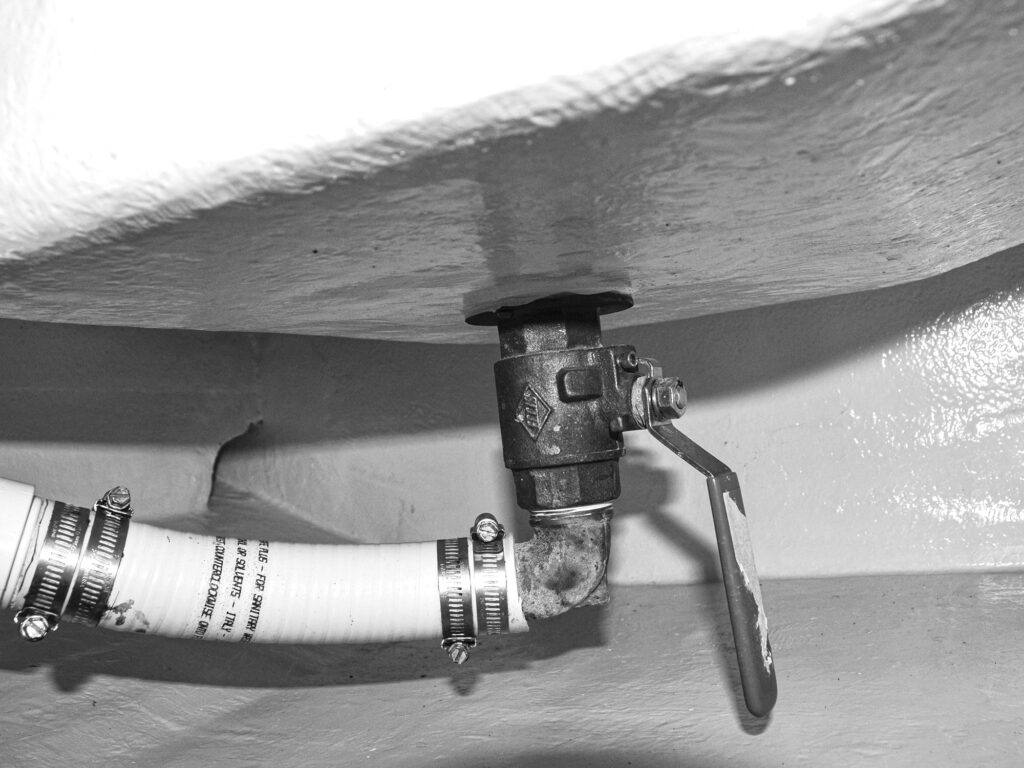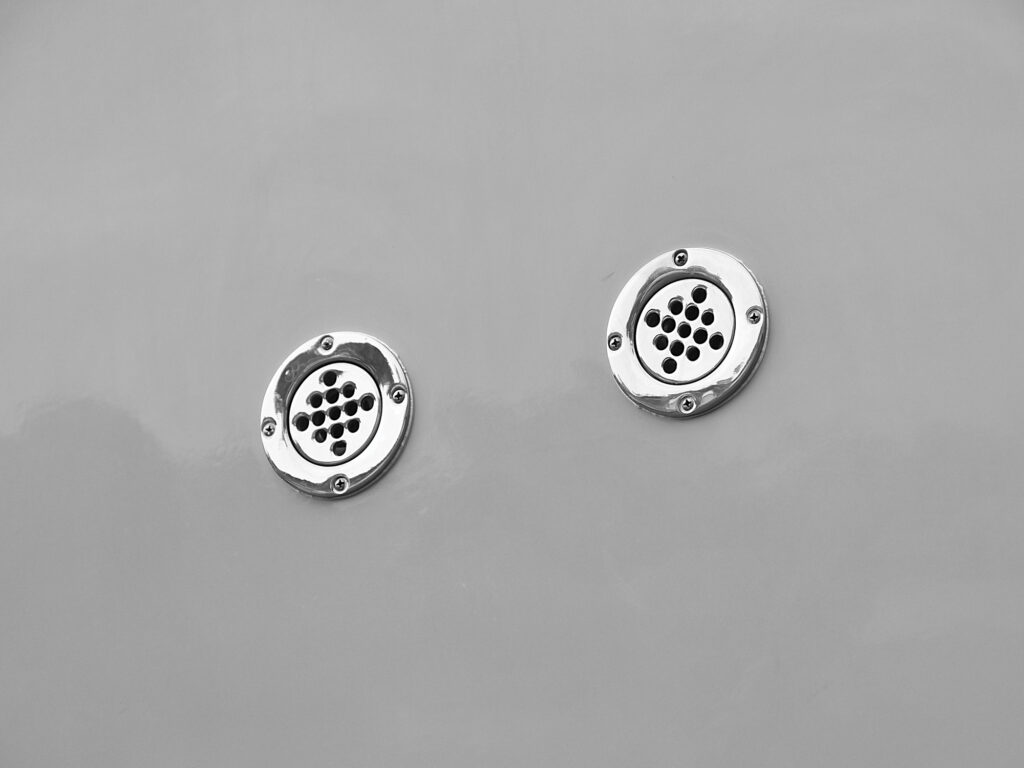
Not long ago, I inspected a vessel under construction and was pleased to see that the builder had made the holding tank from fiberglass (also known as fiberglass-reinforced plastic, or FRP). Essentially, it was fabricated with the same materials and techniques as the hull, which relied on a solid laminate and vinylester resin. FRP tanks, if manufactured correctly, can last the life of the vessel. On this boat, all plumbing fittings were reinforced nylon, another excellent choice that is impervious to the corrosive effects of effluent.
However, the installation’s design went awry when it came to design and hoses. The discharge fitting was installed on the tank’s bottom, ostensibly to harness gravity but in reality ensuring that the hose connected to that fitting would always be filled with effluent. The tank’s bottom fitting also lacked a valve, making hose replacement a difficult, unpleasant job.
Fittings located anywhere other than the tank top are an invitation to leakage. All holding-tank plumbing fittings should be glass-reinforced nylon, FRP, PVC schedule 80 or bronze. Under no circumstances should stainless steel, regardless of the alloy, be used for conveyance or containment of effluent. As durable as it might be in weather-deck applications, it is susceptible to crevice corrosion when exposed to stagnant, oxygen-depleted water and effluent.
Ideally, sanitation-system hoses should be arranged to avoid entrapment of effluent. They should be sloped to ensure drainage. Where traps can’t be avoided, hard PVC pipe can be used because it is impervious to permeation and odor. Where PVC pipe transitions to hose, purpose-made barbed PVC pipe adapters should be used, rather than slipping hose directly over smooth pipe sections.
The hose used for holding-tank vent plumbing should carry the same rating as hose used for conveyance of liquid effluent. Most manufacturers of PVC sanitation hose (which has a smooth, shiny appearance) prohibit the use of solvents and alcohol, which include nontoxic antifreeze used for winterizing. If your vessel lives in a seasonally subfreezing climate and it gets winterized, then the sanitation hose should be EPDM-based, which is black or white and rubberlike. Or you must avoid the use of antifreeze. While EPDM hose is stiffer and harder to install, and typically more costly than PVC-based hose, it might be worth it. Some brands offer as much as a 10-year no-permeation warranty, and it carries no restrictions on chemical exposure.

Holding-tank vents (there should be two) should be large, at least three-quarters of an inch, but 1.5-inch is ideal, with one plumbed to each side of the vessel’s hull. This setup will facilitate cross ventilation through the tank, discouraging the formation of anaerobic bacteria that produce the foulest odors.
The tank on the new build that I saw did have two more appealing details: an inspection and clean-out port, and a removable pickup or drop tube for the deck pump-out. Holding tanks—and all tanks, for that matter—should have access ports for interior cleaning. Ideally, removable drop tubes are made from PVC. They let the user clear a clog, or replace the tube should it become dislodged or perforated.
Steve D’Antonio offers services for boat owners and buyers through Steve D’Antonio Marine Consulting.








